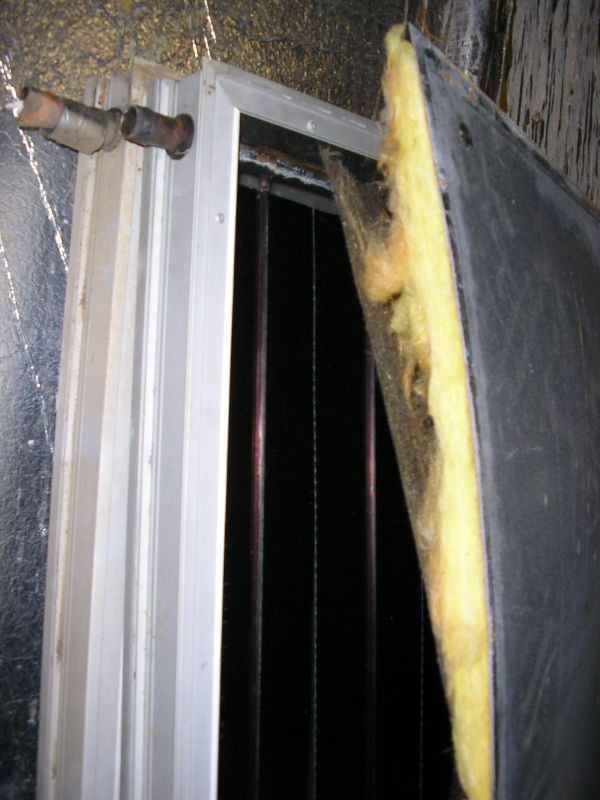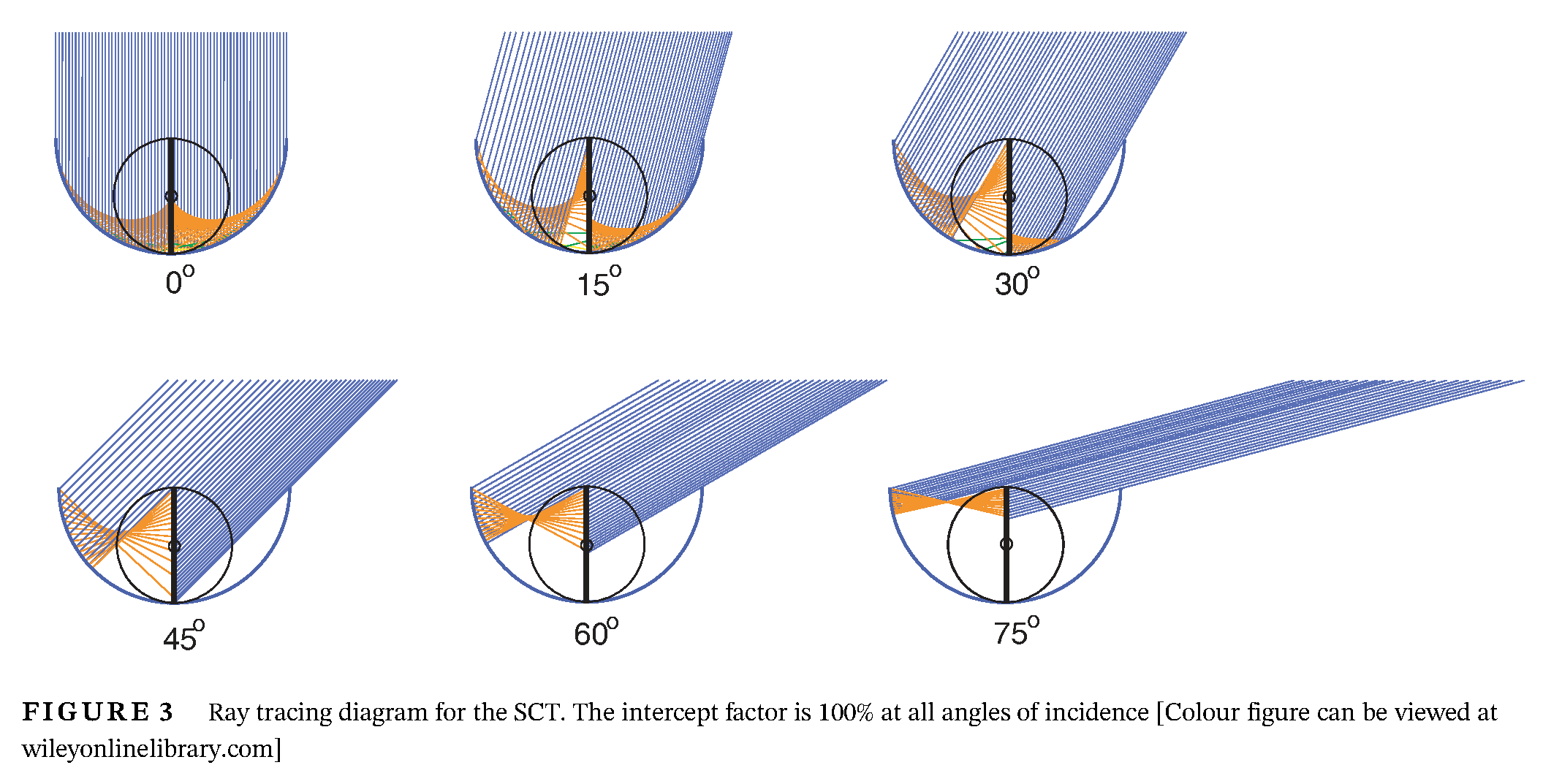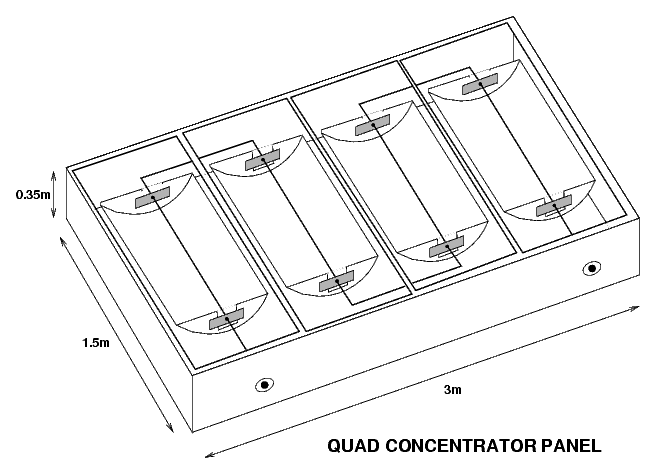Looking inside the solar hot water panels, it's interesting to see how simple they are. Copper pipes are sandwidched between black annodised fins, similar to my collector panel design, and these heat up from direct exposure to the sun through the glass. The back is insulated.

The approach of using multiple connector panels and smaller pipes in parallel could be applied in my design. The diagram below is from the semi-circular solar concentrator research paper that I mentioned earlier, and shows that when the sun is at some angles, half or more of the collector panel is unlit. Testing has revealed how this results in a significant heat loss - with the unlit section acting as a heatsink and drawing heat away from the pipe. In such cases the unlit section is noticably colder to the touch compared to the pipe.

This problem might be reduced if multiple smaller collector panels and pipes were run next to each other, and colder/unlit sections were shut off to prevent drawing heat away from water passing through the hotter, lit, pipes.
But this would make the design much more complex, and probably require lots of high-temperature solenoid valves. It also wouldn't help as much on cloudy days where the light is diffused and therefore incident from a wide range of angles. So I won't pursue it at this stage.
The Quad Concentrator Panel
But the idea of connecting multiple collector panels inside the same sealed panel can also be applied in a different way. In the tests described in my last log I confirmed that my design is much improved when sealed with a transparant cover. Instead of mounting the glass or perspex directly on top of the concentrator trough, which is particularly awkward when using second-hand glass to save cost, a row of separate semi-circular solar concentrators could be mounted within a sealed box with glass panels on a frame on top.
Besides making the mounting of the glass easier, the box would add a second layer of insulation around the solar concentrators and their connecting pipes. Ideally the top edges of the concentrators would have a foam seal that touches against the glass so that there are separate sealed sections inside the concentrators and inside the collector box. Empty spaces in the box would ideally be filled with ceiling insulation material.

A relatively nearby business is currently selling used glass panels in aluminium frames with dimensions 1,500mm x 750mm, for $50 each with 50 in stock (maybe). The concentrator dimensions are 900mm x 580mm, so this suits such a design quite well, with ample room around the ends for interconnecting pipes. Four concentrators, with a glass panel each in the top of the sealed collector box, would be 3m wide. It would be mounted at a 22 degree incline.
I would prefer if the cost of the glass was a little lower, but other sources don't have lots of identical frames the same size. On the upside, it might be safer to use cheaper chrome vinyl wrap for the reflective coating given that in this design it's not exposed to rain. It avoids the problem of the drums rusting as well.
The next step is to work out what materials to use. I'm currently thinking of a wooden frame, with the sides covered by sheets of corflute. 1/2" steel pipes with threaded couplings. I've already found a decent set of old 44 gallon drums.
Discussions
Become a Hackaday.io Member
Create an account to leave a comment. Already have an account? Log In.